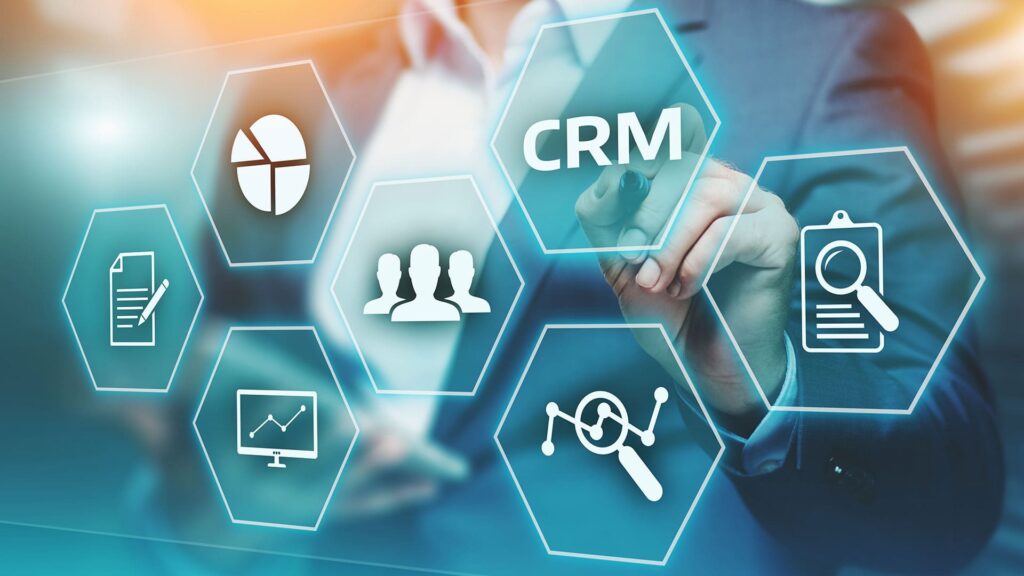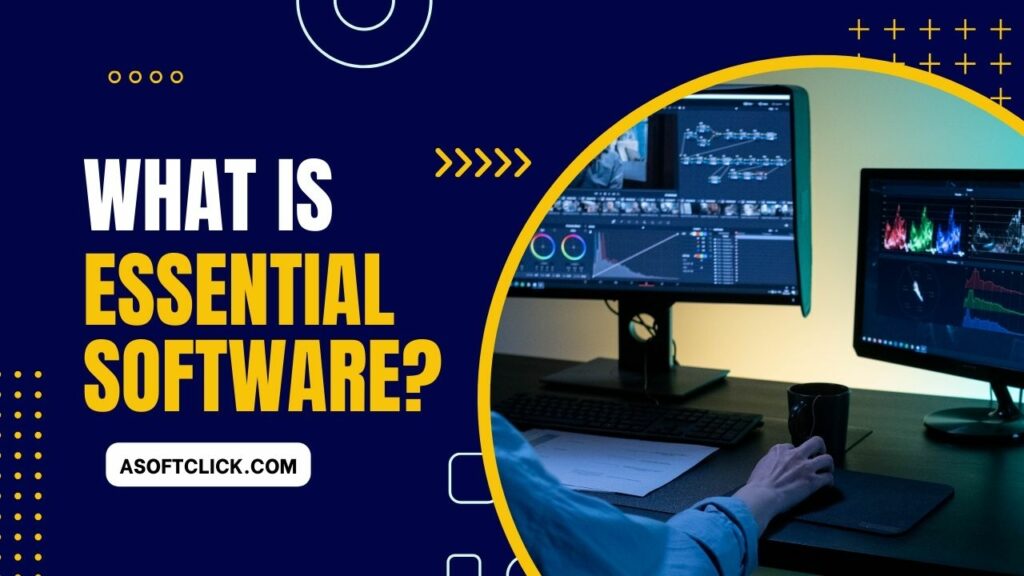 The central question of our contemporary digital existence is “What is essential software?” It is important to comprehend the fundamental software programs that power our gadgets. These fundamental software elements work as the building blocks of functionality, allowing us to carry out a variety of tasks, such as browsing the internet, creating documents, and safeguarding our systems from security risks. We will explore the idea of vital software in this post, outlining the main classifications and providing instances of important apps that influence our online lives.
The central question of our contemporary digital existence is “What is essential software?” It is important to comprehend the fundamental software programs that power our gadgets. These fundamental software elements work as the building blocks of functionality, allowing us to carry out a variety of tasks, such as browsing the internet, creating documents, and safeguarding our systems from security risks. We will explore the idea of vital software in this post, outlining the main classifications and providing instances of important apps that influence our online lives.
How does the software work?
Software plays a crucial role as a set of instructions or code that guides computers and devices in performing various tasks. It serves as the backbone of our digital experiences, enabling us to accomplish a wide range of activities efficiently and seamlessly. Whether it’s the applications on our smartphones, the programs on our computers, or the systems running in the background, software is the driving force behind it all. Two primary categories play crucial roles in the functioning of computers and devices: application software and system software. These two categories serve distinct purposes and are essential for the smooth operation of our digital world.
Application software
Application software is created to do certain tasks or applications that users require. It allows users to do a variety of tasks, including word processing, spreadsheet creation, internet browsing, image editing, and more.
Application software executes tasks depending on user input and delivers features and capabilities suited to the user’s needs. For user interaction, it usually has a graphical user interface (GUI). Users must individually install application software on their computers or devices to use specific functionalities.
System software
The fundamental software that governs and controls the hardware and offers a platform for application software to run is known as system software. It acts as a bridge between the hardware and the application software, ensuring that the computer works properly.
The operating system, device drivers, utility programs, and other critical components that support hardware communication, memory management, and security are all part of the system software. It guarantees that various software and hardware components work in tandem.
System software is installed at the heart of the operating system of a computer and oversees controlling the computer’s resources and processes.
What is Essential Software?
The term “essential software” refers to the fundamental apps and programs required for the basic operation of a computer or device. These software components provide the core capabilities needed for various operations and activities. Web browsers for internet access, office suites for productivity, antivirus software for security, and operating systems for managing hardware resources and providing a user interface are all examples. Essential software is the base upon which users build their digital experiences, whether for work, communication, or enjoyment.
1. Project Management Software

Project management software is an essential tool for organizing, planning, and supervising projects. It facilitates effective teamwork and helps teams achieve their objectives. With the advent of project management software, teams can now streamline their workflows, improve communication, and enhance overall productivity.
A few examples of Project Management Software are:
- Trello: Trello is a visual project management application that assists teams in organizing tasks and projects using boards, lists, and cards. It is quite adaptable and appropriate for a range of project kinds.
- Asana: Teams can manage assignments, projects, and due dates with the help of this flexible project management tool. Task assignments, timetables, and collaboration tools are some of the capabilities it provides.
2. Customer Relationship Management Software

Customer Relationship Management (CRM) software is intended to assist firms in managing customer interactions, streamlining sales and marketing processes, and improving customer engagement. Here are some popular CRM software examples:
- Salesforce: Provides a comprehensive set of functions for sales, marketing, customer care, and analytics.
- HubSpot CRM: HubSpot provides a free CRM that contains features for lead tracking, email marketing, contact management, and customer care.
- Zoho CRM: A cloud-based CRM software that includes analytics, multichannel communication, sales automation, and marketing automation.
3. Accounting Software

Accounting software is required for firms to handle their financial operations, track spending, generate financial statements, and adhere to tax rules. Here are some popular accounting software examples:
- QuickBooks: Intuit’s QuickBooks is one of the most popular accounting software solutions for small and medium-sized enterprises. It has invoicing, expense monitoring, financial reporting, and payroll processing capabilities.
- Xero: This is a cloud-based accounting software that allows for financial management, invoicing, bank reconciliation, and cooperation with accountants and bookkeepers.
- FreshBooks: FreshBooks is a small business and freelancer invoicing, expense management, time tracking, and financial reporting software.
4. Time Tracking Software
![]()
Time-tracking software provides individuals and businesses with the ability to monitor and control the amount of time they spend working on a variety of jobs and projects more effectively. The following is a selection of examples of well-known time-tracking software:
- Toggl: It is a simple time-tracking app that allows users to track and categorize their working hours. It is appropriate for both people and teams, and it includes reporting and integration features.
- Clockify: A free time tracking program that allows you to track billable hours, create timesheets, and generate reports. It is appropriate for small enterprises as well as freelancers.
5. Website Building Software

Website-building software, also commonly referred to as website builders, gives individuals and organizations the ability to develop and maintain websites without requiring a significant amount of coding experience or technical expertise. The following is a selection of examples of well-known website creation software:
- Wix: Wix is a simple website builder with a variety of templates and a drag-and-drop interface. It is appropriate for individuals and small businesses who want to build professional websites.
- Squarespace: Squarespace is an elegant and design-focused website creation software. It has templates for a variety of sectors and e-commerce features.
- Weebly: Offers designs, an easy-to-use website builder, and e-commerce capabilities to small enterprises and individuals.
6. Payment Transaction Software

Electronic transactions can be made easier to complete with the help of payment transaction software. This software enables consumers and organizations to send and receive payments safely. The following is a list of examples of some of the most popular payment transaction software:
- PayPal: This is a popular payment network that allows customers to send and receive money online. It is appropriate for both personal use and e-commerce firms.
- Venmo: Venmo is a mobile payment app owned by PayPal that is popular for person-to-person transactions and bill splitting among friends.
- Worldpay: Worldpay also provides payment processing and technology solutions for all sizes of businesses, including e-commerce, in-store, and mobile payments.
7. Communication Software

The usage of communication software enables individuals and groups to collaborate successfully, interact with one another, and share information. The following are some examples of well-known communication software:
- Slack: A popular team messaging and collaboration tool that includes channels, direct chat, file sharing, and integrations with a variety of apps and services.
- Zoom: Zoom is a popular video conferencing and online meeting software for virtual meetings, webinars, and web conferencing.
8. Sales, Marketing, and PR Software

Software that manages sales, marketing, and public relations (PR) plays an essential part in the process of managing and optimizing the many facets of customer engagement, lead generation, and brand promotion. The following is a list of examples of well-known software that falls into these categories:
Sales Software:
- Salesforce: It is a complete CRM platform that offers capabilities for sales automation, lead management, and analytics to businesses of all sizes.
- HubSpot Sales Hub: HubSpot Sales Hub includes lead management, email tracking, and sales analytics functionalities. It works in tandem with HubSpot’s marketing and CRM technologies.
Marketing Software:
- Mailchimp: It is a well-known email marketing platform that provides email campaigns, marketing automation, and audience segmentation.
- Marketo: An Adobe marketing automation software that includes capabilities for lead nurturing, customer engagement, and marketing analytics.
Public Relations (PR) Software:
- Cision: A comprehensive public relations and media communication software that assists firms in managing media lists, tracking news mentions, and distributing press releases.
- Meltwater: Meltwater helps firms quantify the impact of their public relations initiatives by providing media monitoring, social media management, and influencer tracking.
What is a system software and application software?
System software plays a vital role in managing computer hardware and creating a platform for various application software to operate smoothly. Without system software, our computers would not be able to function effectively, making it an essential component of our digital lives.
While system software is responsible for managing the computer’s operations and resources, application software is designed to cater to specific tasks and meet user needs. This type of software offers a wide range of applications that can enhance our daily lives. Whether you need to write a document, browse the internet, edit multimedia files, or even indulge in some gaming, there is an application out there to fulfill your requirements.
What is the most essential software in a computer system? What happens if it becomes damaged?
When it comes to computer systems, there is one piece of software that stands above the rest in terms of importance – the operating system (OS). This essential piece of technology not only manages the hardware components but also empowers the execution of various programs.
From rendering your device completely inoperable to compromising the security of your sensitive information, the consequences of a damaged OS are far-reaching and can have a significant impact on your digital life. In addition to the obvious issues like data loss and system instability, a damaged OS can also result in reduced functionality, making it difficult for you to carry out even the simplest tasks on your device. It’s crucial to understand the potential risks and take proactive measures to protect your operating system from harm.
How do I choose the right application software?
When it comes to selecting the perfect application software, taking a systematic approach is key. Start by identifying your specific needs and ensuring compatibility with your operating system.
Take the time to carefully evaluate each software’s user interface, scalability, and support options. These factors play a significant role in determining the overall effectiveness and suitability of the software for your needs. The key factors that should be considered are security, licensing, ownership terms, customization, and integration capabilities. Look for features such as encryption, access controls, and regular security updates to ensure your data remains safe from potential threats.
When it comes to choosing software, it’s also important to consider your budget constraints. However, that doesn’t mean you have to compromise on quality or support.
Why is application software important?
Application software has become an indispensable tool for individuals and businesses alike. Its significance cannot be overstated, as it empowers users to accomplish various tasks and tackle a multitude of challenges. From word processors and spreadsheet programs to graphic design tools and video editing software, these applications provide the functionality and tools necessary to get the job done efficiently and effectively.
What is software and hardware?
Two essential components play a crucial role: software and hardware. These two elements work hand in hand to ensure the smooth functioning of your computer. Hardware is the backbone of any computer system. It encompasses all the physical components that you can touch and feel, making it an essential aspect to understand. It ranges from the powerful central processing unit (CPU) to the memory that stores your data. Also, the storage devices that hold your files to the display screens that bring visuals to life, and the input devices like keyboards and mice that allow you to interact with your machines.
Software is intangible and made up of programs and data. It serves as the brain behind our devices, instructing the hardware on how to execute specific functions. Three key components make up the foundation of any computer system: the operating system, application software, and data files. These elements work together seamlessly to ensure the smooth functioning of our devices and enable us to perform various tasks efficiently.
Conclusion: What is essential software?
In summary, “what is essential software” refers to the core apps and programs that are required for the basic operation of a computer. The operating systems, office suites, web browsers, and security software all fall within this group. These critical software components provide the foundation of a computer’s functionality, ensuring efficient and secure digital experiences.





